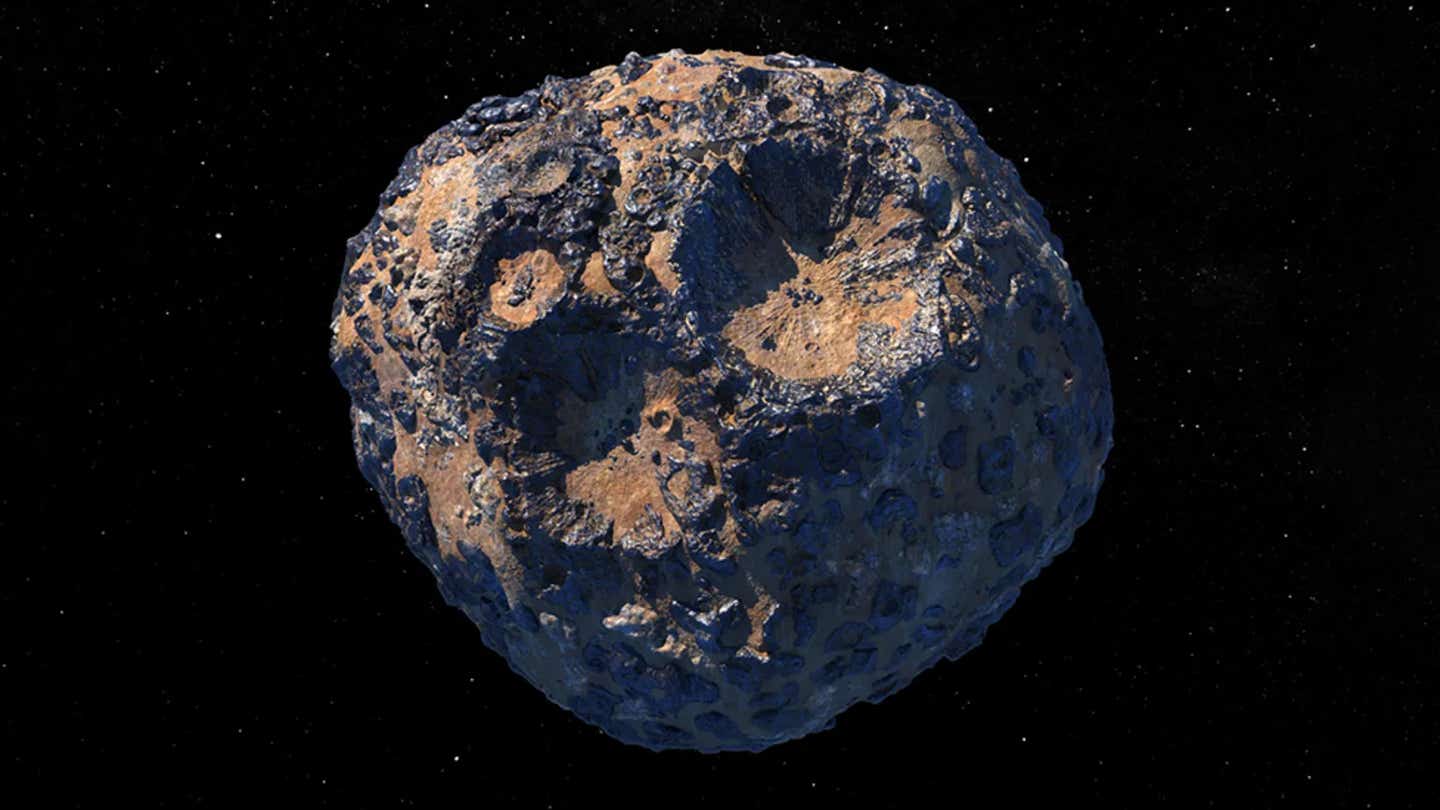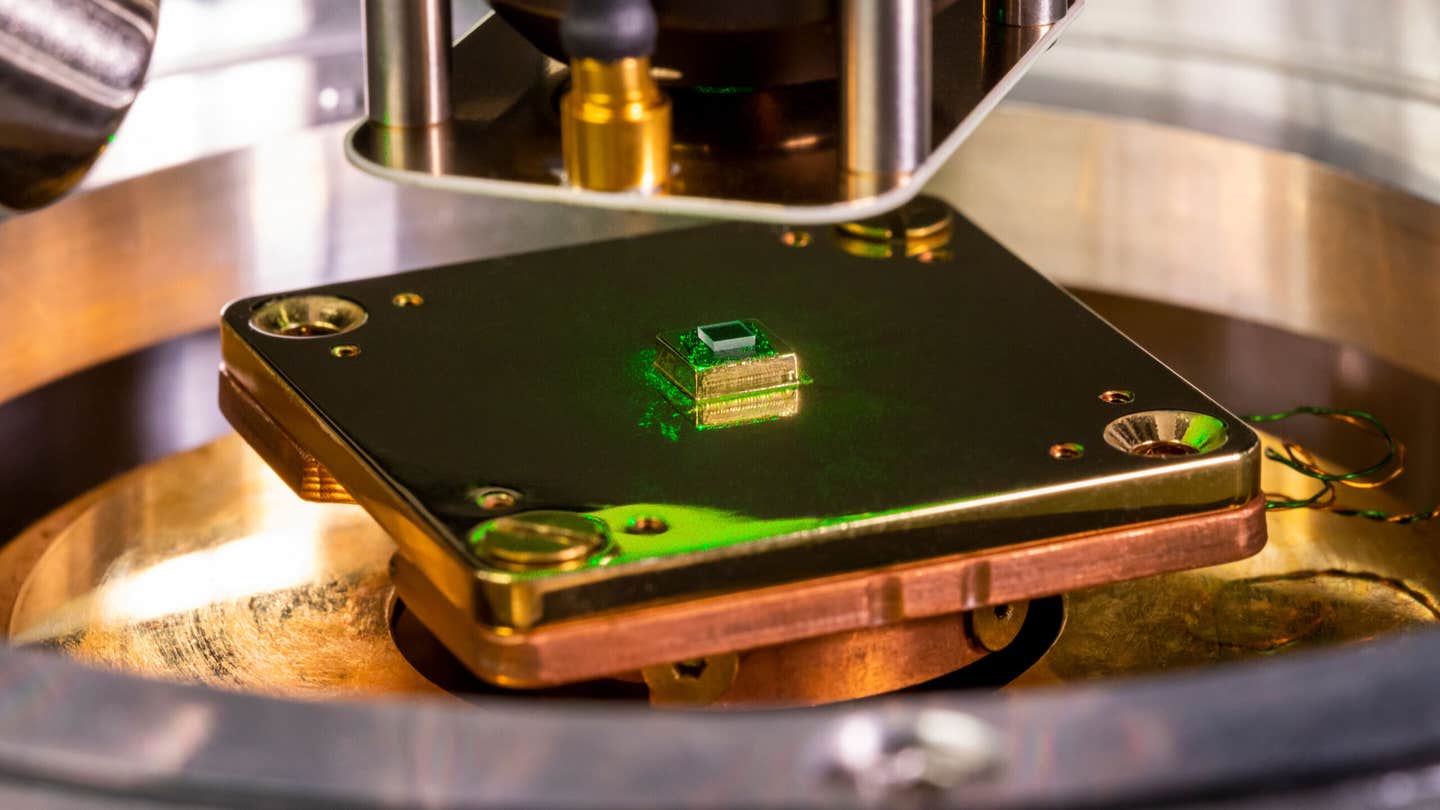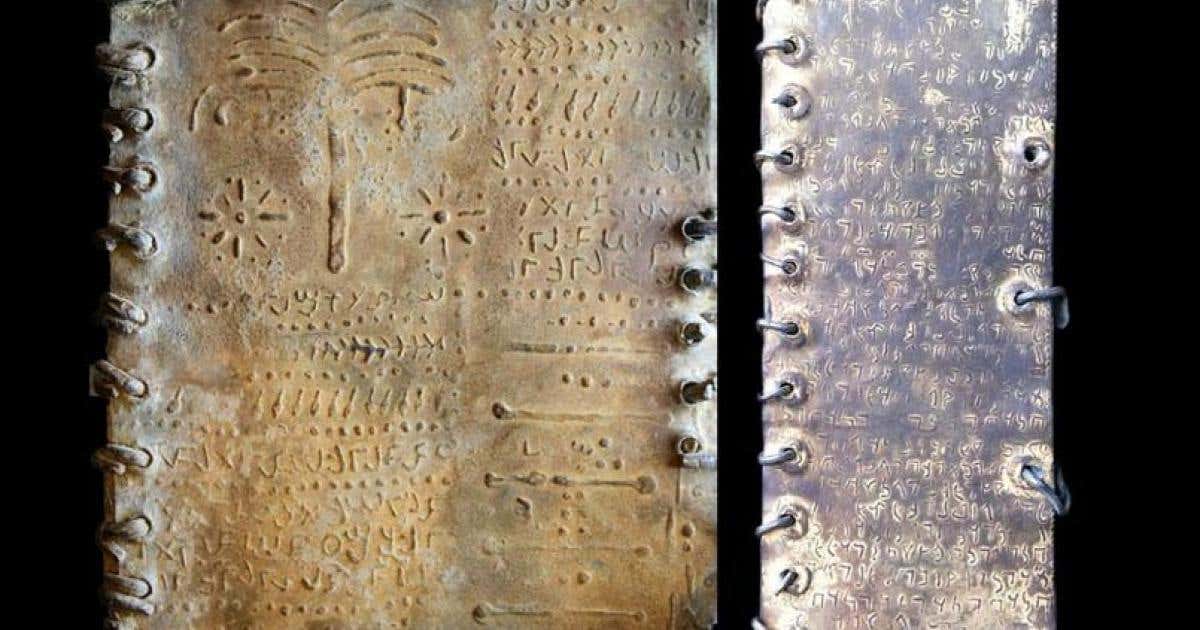Astronomers discover hidden link between M and K-type asteroids
Asteroids are like the screws, sawdust, and scraps left behind after a house is built, drifting through space as time capsules from billions of years ago.

Artist’s impression of 16 Psyche a typical M-type asteroid. (CREDIT: NASA)
Asteroids have long been described as the leftover pieces from the solar system’s early construction. They are like the screws, sawdust, and scraps left behind after a house is built, drifting through space as time capsules from billions of years ago. But despite decades of study, their true make-up has remained a mystery.
A new study, published in The Planetary Science Journal, now suggests that two types of asteroids, once thought to be completely different, may actually share the same origins and a surprising mineral fingerprint.
Cracking the "Missing Mantle" Puzzle
One of the big questions in planetary science is whether early solar system bodies melted and separated into layers, forming metal-rich cores, rocky mantles, and lighter crusts. Some asteroids appear to be the shattered remains of such layered worlds. But here’s the puzzle: while plenty of iron-rich fragments exist, scientists have struggled to find the expected rocky mantle pieces. This mystery is called the “missing mantle” problem.
A team led by Joe Masiero, a scientist at Caltech’s IPAC center, has offered new evidence that may help solve it. Their work used an advanced technique called polarimetry to examine how light scatters off asteroid surfaces. The results show that two different groups—M-type, thought to be metal-heavy, and K-type, believed to be silicate-rich—may actually come from the same ancient parent bodies that were torn apart long ago.
What Polarimetry Reveals
When sunlight bounces off an asteroid, the waves of light can become polarized, meaning their direction shifts in subtle patterns. Measuring this effect reveals details about the size and makeup of the tiny grains of dust, called regolith, that blanket the surface. Unlike regular spectroscopy, which measures the light spectrum to spot elements and minerals, polarimetry can uncover information hidden in otherwise featureless asteroid surfaces.
“Polarization gives us insight into the minerals in the asteroids that we can't get from just how well the asteroid reflects sunlight, or what the reflected light’s spectrum looks like,” said Masiero. “Polarization gives you a third axis to ask questions about the surface mineralogy that's independent of brightness or spectral information.”
Related Stories
- Deflecting asteroids isn't as easy as scientists previously thought
- Vesta might be much more than an asteroid, astronomers find
Using the WIRC+Pol instrument on the Palomar Observatory’s 200-inch telescope near San Diego, Masiero’s team studied how polarization changes as asteroids move through different “phases,” or angles relative to Earth and the Sun. This approach is similar to how the Moon appears differently depending on its phase, but in this case, it reveals a hidden mineral fingerprint.
The Troilite Connection
The survey focused on M-type asteroids such as Psyche, Kleopatra, and Hertha, along with K-types including Julia and Eos. The results showed that both groups produced nearly identical polarization curves, suggesting they share the same kind of dusty surface layer. The best match to these observations came from a mix dominated by troilite, an unusual mineral made of iron and sulfur.
“Troilite is very uncommon, so we can use it as a fingerprint that links these two different types of objects to each other,” Masiero explained.
This connection is important because it shows that the two asteroid classes may actually be siblings rather than strangers. Their different appearances could come from the layers of the original larger body they once belonged to. Just as Earth has a metallic core, a silicate mantle, and a thin crust, these asteroids may represent fragments from different depths of an ancient parent world.
Shattered Worlds and Shock Darkening
The study also found that brightness differences between asteroids could be explained by processes like shock darkening. When large impacts strike an asteroid, troilite can melt and spread across the surface, darkening it and muting its spectral signals. Evidence of this was seen in the Eos asteroid family, as well as in meteorites like Chelyabinsk that struck Earth after being heavily shocked in space.
This may help explain why asteroid classifications have sometimes been confusing. Depending on which system is used, the same asteroid might be labeled M-type, K-type, X-type, or even T-type. The new findings suggest these labels may reflect different surface effects rather than fundamental differences in their composition.
Relevance to NASA’s Psyche Mission
One of the most exciting parts of this discovery is its connection to NASA’s Psyche mission, launched in 2023 and on its way to asteroid Psyche, one of the largest M-types. Psyche was once thought to be a pure metal core—the exposed heart of a shattered protoplanet. But Masiero’s work suggests a different story. Instead of a shiny metal surface, Psyche may be covered with silicates mixed with troilite, a far more complex picture than once imagined.
Other recent studies support this view. Observations with ALMA and spectral data suggest Psyche contains 10 to 15 percent silicates. If confirmed, this would mean Psyche is not a stripped planetary core, but part of a partially differentiated world, wrapped in a dusty mix of iron sulfides and silicates.
The spacecraft carries instruments to test this theory, including a magnetometer that will check for signs of a metallic core. If Psyche’s surface is dominated by non-magnetic troilite, scientists may find little to no magnetism. That result would directly support the polarimetry findings.
Rewriting the History of Asteroids
These results do more than just connect two asteroid groups. They reshape how we understand the raw materials that built the solar system. If troilite-rich mixtures were common in early protoplanets, then iron sulfides may have played a much larger role in shaping planetary chemistry and thermal history than previously thought.
The study also highlights the strength of polarimetry as a tool for uncovering asteroid secrets. By adding this method alongside spectroscopy, scientists can now see hidden details that were invisible before. This could lead to a more accurate understanding of asteroid families and their shared histories.
As Masiero put it, “Asteroids offer us the chance to look at what was going on in the early solar system like a freeze frame of the conditions that existed when the first solid objects formed.”
Practical Implications of the Research
The findings could help answer long-standing questions about how Earth and other planets were built. By linking asteroid classes to shared parent bodies, scientists gain a clearer picture of what materials were present during planet formation.
This knowledge may improve models of planetary evolution, influence how we interpret meteorites, and help future missions pick better targets for study. For humanity, it means a deeper understanding of our origins and a roadmap for exploring the resources locked inside asteroids.
Note: The article above provided above by The Brighter Side of News.
Like these kind of feel good stories? Get The Brighter Side of News' newsletter.



